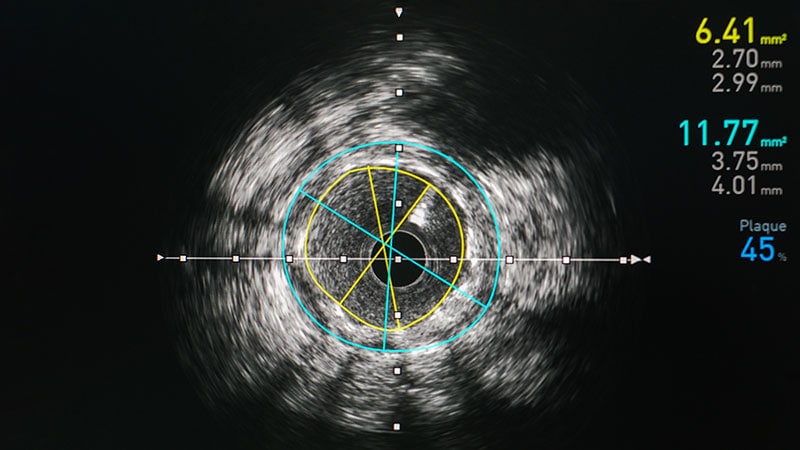Intravascular Ultrasound Guidance Improves Outcomes Compared to Angiography in Acute Coronary Syndrome Patients Undergoing Percutaneous Coronary Intervention
The IVUS-ACS study was a large randomized trial that compared IVUS-guided versus angiography-guided percutaneous coronary intervention (PCI) in 3,505 patients presenting with acute coronary syndrome (ACS). The primary endpoint was the one-year composite of target vessel failure (TVF), including cardiac death, target vessel myocardial infarction (TVMI), and clinically driven target vessel revascularization (TVR).
The results showed that the TVF rate was significantly lower in the IVUS-guided group compared to the angiography-guided group (4.0% vs. 7.3%, a 45% reduction in hazard rate). The benefits of IVUS guidance were seen across various secondary endpoints as well, including TVF without procedural MI, individual components of the primary endpoint, and stent thrombosis.
The authors noted that the benefits of IVUS guidance were particularly pronounced in patients where optimal stent implantation was achieved, including optimal stent expansion, lesion coverage, and lack of major edge dissections. The findings suggest that IVUS guidance should be considered a standard component of PCI management for patients with ACS.
The study's lead author, Dr. Shao-Liang Chen, emphasized that the trial included a wide range of complex lesions, making the results broadly applicable. The co-study chair, Dr. Gregg W. Stone, added that the findings, combined with a related meta-analysis, should lead to a class I recommendation for IVUS guidance in PCI guidelines, though it is still underutilized due to cost and training barriers.
Zusammenfassung anpassen
Mit KI umschreiben
Zitate generieren
Quelle übersetzen
In eine andere Sprache
Mindmap erstellen
aus dem Quellinhalt
Quelle besuchen
www.medscape.com
IVUS Bests Angiography to Guide PCI in ACS
Wichtige Erkenntnisse aus
by Marilynn Lar... um www.medscape.com 04-15-2024
https://www.medscape.com/viewarticle/ivus-bests-angiography-guide-pci-acs-2024a100074i
Tiefere Fragen
